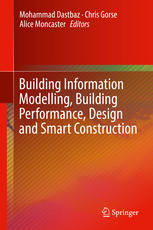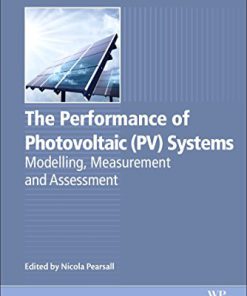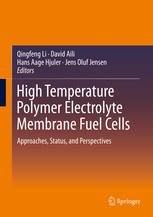Proton Exchange Membrane Fuel Cells Design Modelling and Performance Assessment Techniques 1st Edition by Alhussein Albarbar, Mohmad Alrwe 3319707273 9783319707273
$50.00 Original price was: $50.00.$25.00Current price is: $25.00.
Proton Exchange Membrane Fuel Cells Design Modelling and Performance Assessment Techniques 1st Edition by Alhussein Albarbar, Mohmad Alrwe – Ebook PDF Instant Download/DeliveryISBN: 3319707273, 9783319707273
Full download Proton Exchange Membrane Fuel Cells Design Modelling and Performance Assessment Techniques 1st Edition after payment.

Product details:
ISBN-10 : 3319707273
ISBN-13 : 9783319707273
Author: Alhussein Albarbar, Mohmad Alrwe
This book examines the characteristics of Proton Exchange Membrane (PEM) Fuel Cells with a focus on deriving realistic finite element models. The book also explains in detail how to set up measuring systems, data analysis, and PEM Fuel Cells’ static and dynamic characteristics. Covered in detail are design and operation principles such as polarization phenomenon, thermodynamic analysis, and overall voltage; failure modes and mechanisms such as permanent faults, membrane degradation, and water management; and modelling and numerical simulation including semi-empirical, one-dimensional, two-dimensional, and three-dimensional models. It is appropriate for graduate students, researchers, and engineers who work with the design and reliability of hydrogen fuel cells, in particular proton exchange membrane fuel cells.
Proton Exchange Membrane Fuel Cells Design Modelling and Performance Assessment Techniques 1st Table of contents:
Chapter 1: Introduction and Background
1.1 Overview
1.2 Fuel Cells Technologies
1.2.1 Fuel Cell Types and Applications
1.2.1.1 Fuel Cell Types
1.2.1.2 Fuel Cell Applications
1.2.2 Full Cell Advantages
1.2.3 Full Cell Disadvantages
References
Chapter 2: Proton Exchange Membrane Fuel Cells: Review
2.1 Overview
2.2 Lifetime Tests for Proton Exchange Membrane Fuel Cells
2.3 A Review of Performance Degradation and Common Failure Modes
2.3.1 Membrane Degradation
2.3.1.1 Membrane Degradation Mechanisms
2.3.1.2 Mitigation Techniques for Membrane Degradation
2.3.2 Degradation of Catalyst Layers and Electro-Catalysts
2.3.2.1 Mechanisms of Catalyst Layer Degradation
2.3.2.2 Catalyst Layer Degradation: Mitigation Techniques
2.3.3 Gas Diffusion Layers
2.3.3.1 Degradation Mechanism of Gas Diffusion Layers
2.3.3.2 Mitigation Techniques for Gas Diffusion Layer Degradation
2.3.4 Bipolar Plate
2.3.4.1 Degradation Mechanisms of Bipolar Plate
2.3.4.2 Mitigation Techniques for Bipolar Plate Degradation
2.4 Monitoring Techniques for PEM Fuel Cells
2.4.1 Polarisation Curve
2.4.2 Steady-State Testing
2.4.3 Duty Cycle Testing
2.4.4 Oxygen Testing
2.4.5 Voltage Decay
2.4.6 Alternating Current Impedance Testing
2.4.7 Cyclic Voltammetry Testing
2.4.8 Single Cell Versus Stack Testing
2.4.9 Accelerated Durability Testing
2.5 Summary
References
Chapter 3: Design and Fundamental Characteristics of PEM Fuel Cells
3.1 Overview
3.2 Hydrogen Fuel Cells: Working Principles
3.2.1 Proton Exchange Membrane Fuel Cells
3.2.1.1 Thermodynamic Analysis
3.2.1.2 Proton Exchange Membrane Fuel Cell
3.3 Polarisation Phenomenon
3.3.1 Activation Polarisation
3.3.2 Ohmic Polarisation
3.3.3 Concentration Polarisation
3.3.4 Overall Voltage
3.3.5 Notes and Observations on Polarisation Curve
3.4 Hydrogen Fuel Cell Efficiency
3.4.1 Current Efficiency
3.4.2 Thermal Efficiency
3.4.3 Fuel Utilisation Efficiency
3.5 Summary
References
Chapter 4: Failure Modes and Mechanisms
4.1 Overview
4.2 Permanent Faults (Irreversible Faults)
4.2.1 Membrane Degradation
4.2.2 Absence of Catalyst
4.2.3 Carbon Monoxide Effects
4.3 Transient Faults (Reversible Faults)
4.3.1 Hydration and Dehydration
4.3.1.1 Fuel Cell Flooding
4.3.1.1.1 Cathode Flooding
4.3.1.1.2 Anode Flooding
4.3.1.1.3 Flow Channel Flooding
4.3.1.1.4 Membrane Dehydration and Flooding
4.4 Thermal Management and Its Impact on Performance
4.4.1 Effect of Sub-zero Temperatures on Performance and Efficiency
4.5 Starvation
4.5.1 Fuel Starvation
4.5.2 Air Starvation
4.5.3 Reactant Leakage
4.6 Ageing and Degradation
4.7 Summary
References
Chapter 5: Mathematical Modelling and Numerical Simulation
5.1 Overview
5.2 Existing Modelling Techniques
5.2.1 Analytical Models
5.2.1.1 One-Dimensional Models
5.2.1.2 Two-Dimensional Models
5.2.1.3 Three-Dimensional Models
5.3 Semi-empirical Models
5.3.1 Dynamic Models
5.3.2 Two-Phase Models
5.4 Modelling Approach Proposed in This Book
5.4.1 Modelling Procedure
5.4.1.1 Assumptions
5.4.1.2 Mass Transfer
5.4.1.3 Charge Transfer
5.4.1.4 Heat Transfer
5.4.2 A Novel Semi-empirical Model
5.4.2.1 Modelling of Activation Polarization
5.4.2.2 Modelling of Ohmic Polarization
5.4.2.3 Modelling of Concentration Polarization
5.4.2.4 Modelling of Active Pressure
5.5 Summary
References
Chapter 6: Experimental Set-Up, Results and Data Analysis
6.1 Overview
6.2 Effect of Temperature and Pressure
6.2.1 Effect of Temperature
6.2.2 Effect of Pressure
6.2.3 Polarisation Curve and Power Density
6.3 Acoustic Emission Phenomena
6.3.1 Experimental Set-Up to Investigate the Impact of Load Variation on Acoustic Emission
6.3.2 AE Measurements and Data Analysis
6.3.3 Experimental Procedure of Water Flooding
6.4 Results and Discussion
6.4.1 Effects of Operating Conditions on the AE Signals
6.4.1.1 AE Signals Analysis Using Statistical Parameters
6.4.1.2 Root Mean Square Value and Variance as Fault Severity Indicators
6.4.2 Results and Comments for Water Flooding
References
Chapter 7: Guide to Modelling and Simulation
7.1 Selection of Model
7.2 Reactions and Flow in Porous Media
7.2.1 Reactions and Flow in Porous Media (Anode)
7.2.2 Reactions and Flow in Porous Media (Cathode)
7.3 Building the Geometry Structure of the Model
People also search for Proton Exchange Membrane Fuel Cells Design Modelling and Performance Assessment Techniques 1st:
working principle of proton exchange membrane fuel cell
proton exchange membrane fuel cell price
proton exchange membrane (pem) fuel cells
proton exchange membrane definition
proton exchange membranes
Tags: Proton Exchange, Membrane, Design Modelling, Performance Assessment, Alhussein Albarbar, Mohmad Alrwe
You may also like…
Chemistry Engineering












